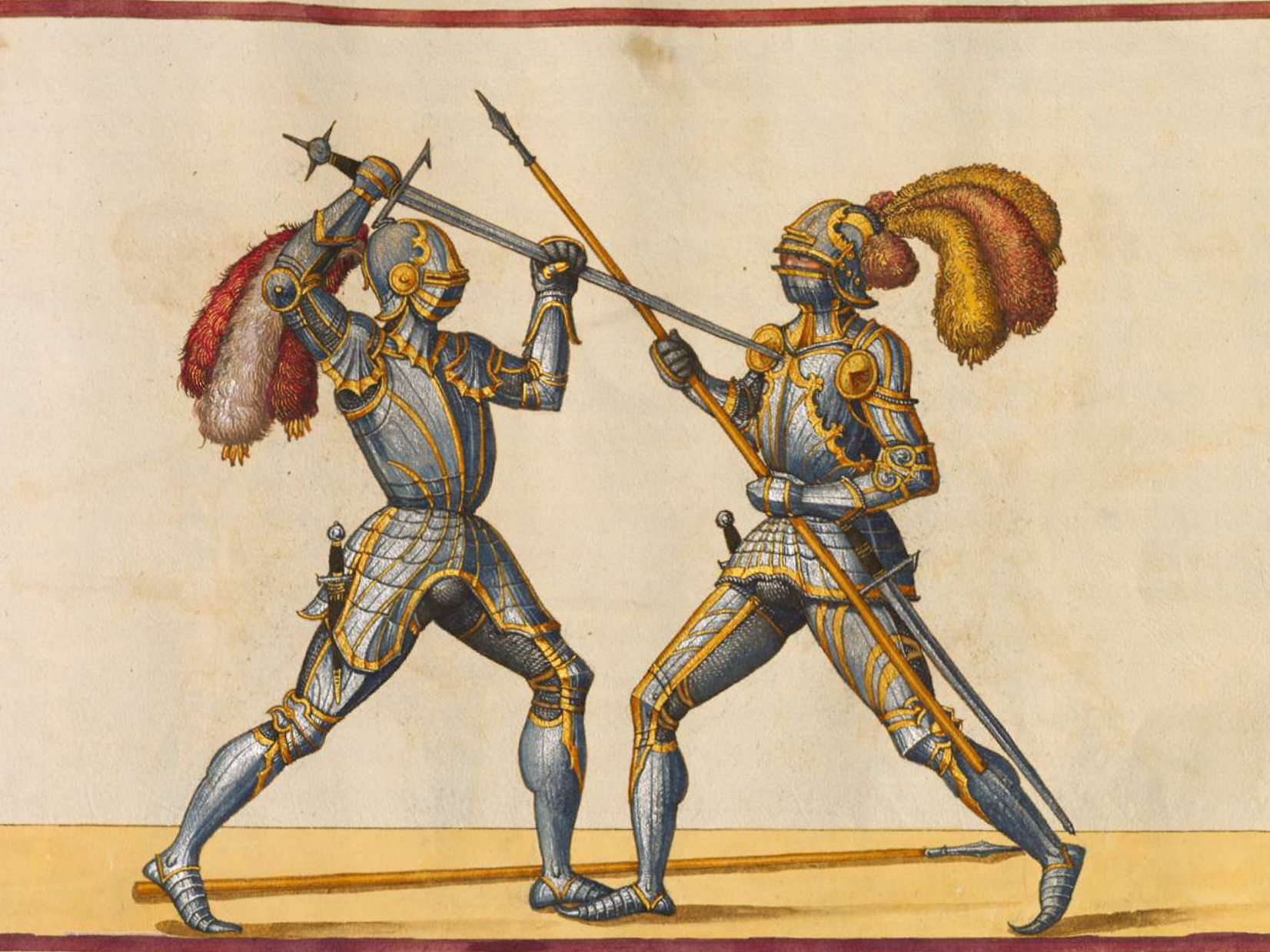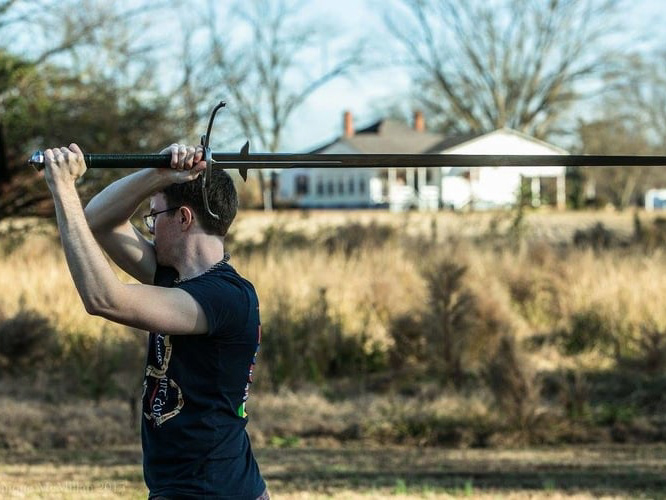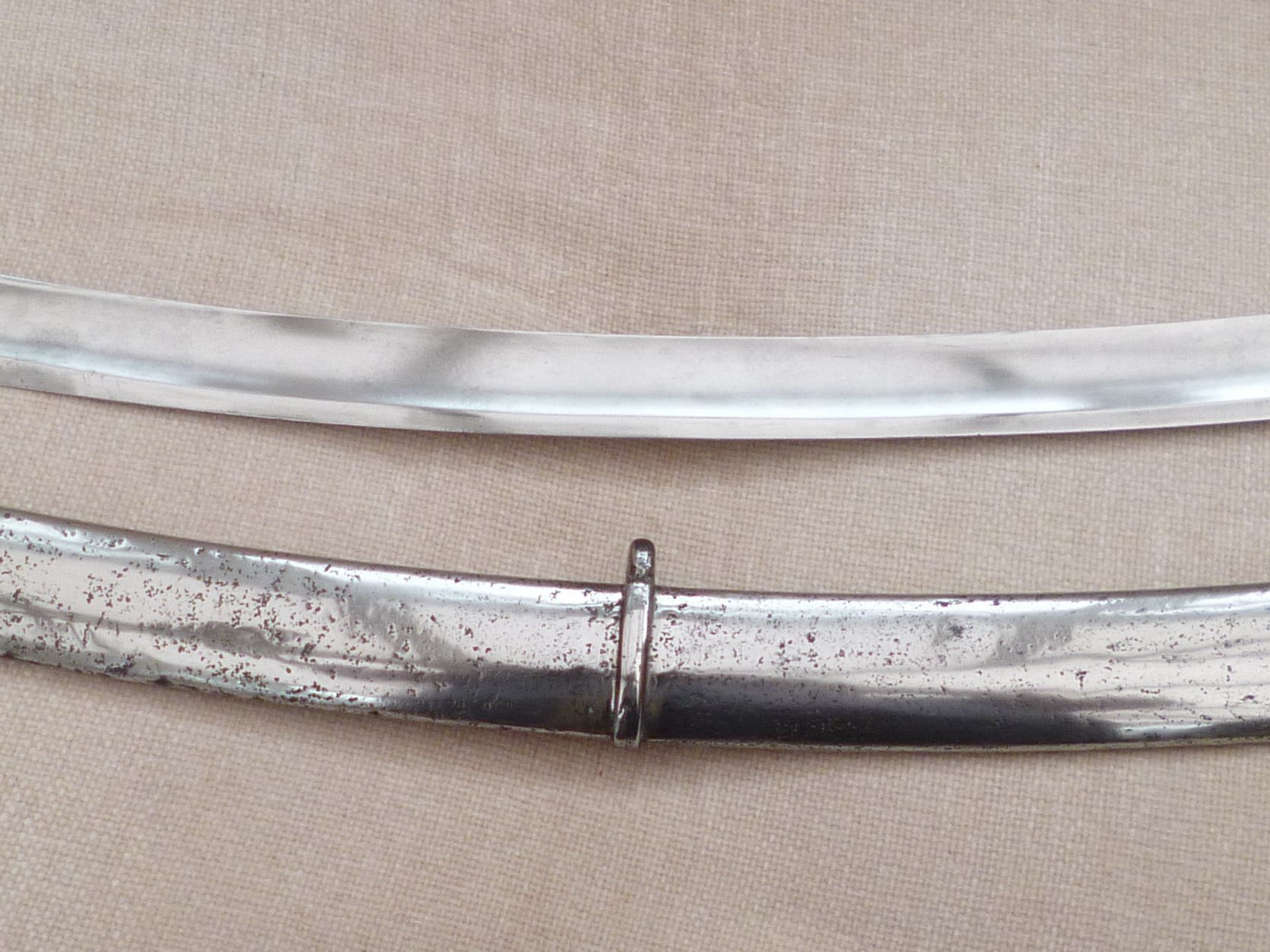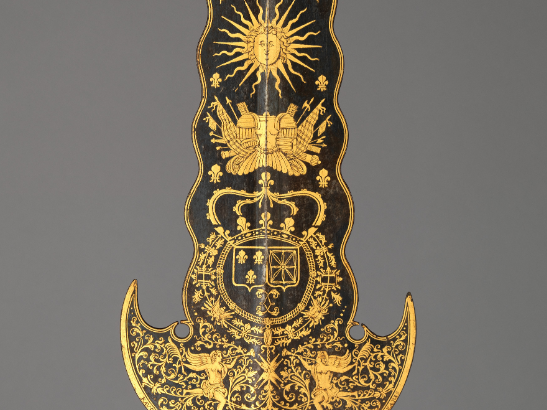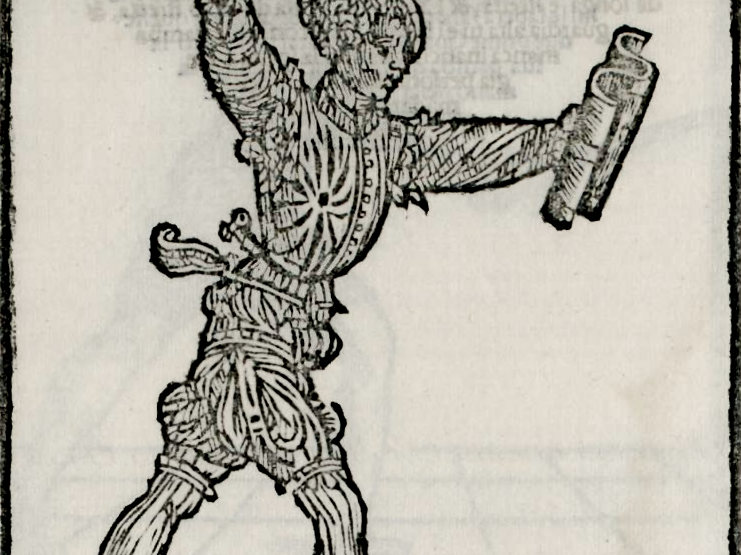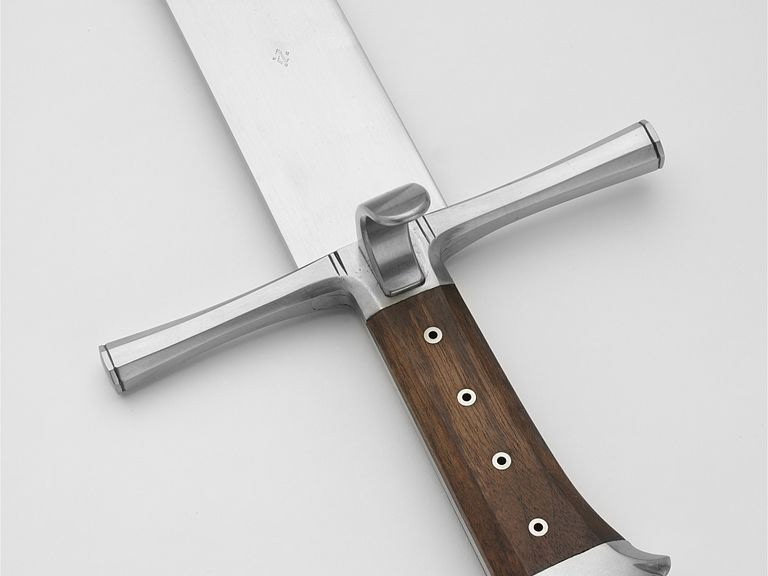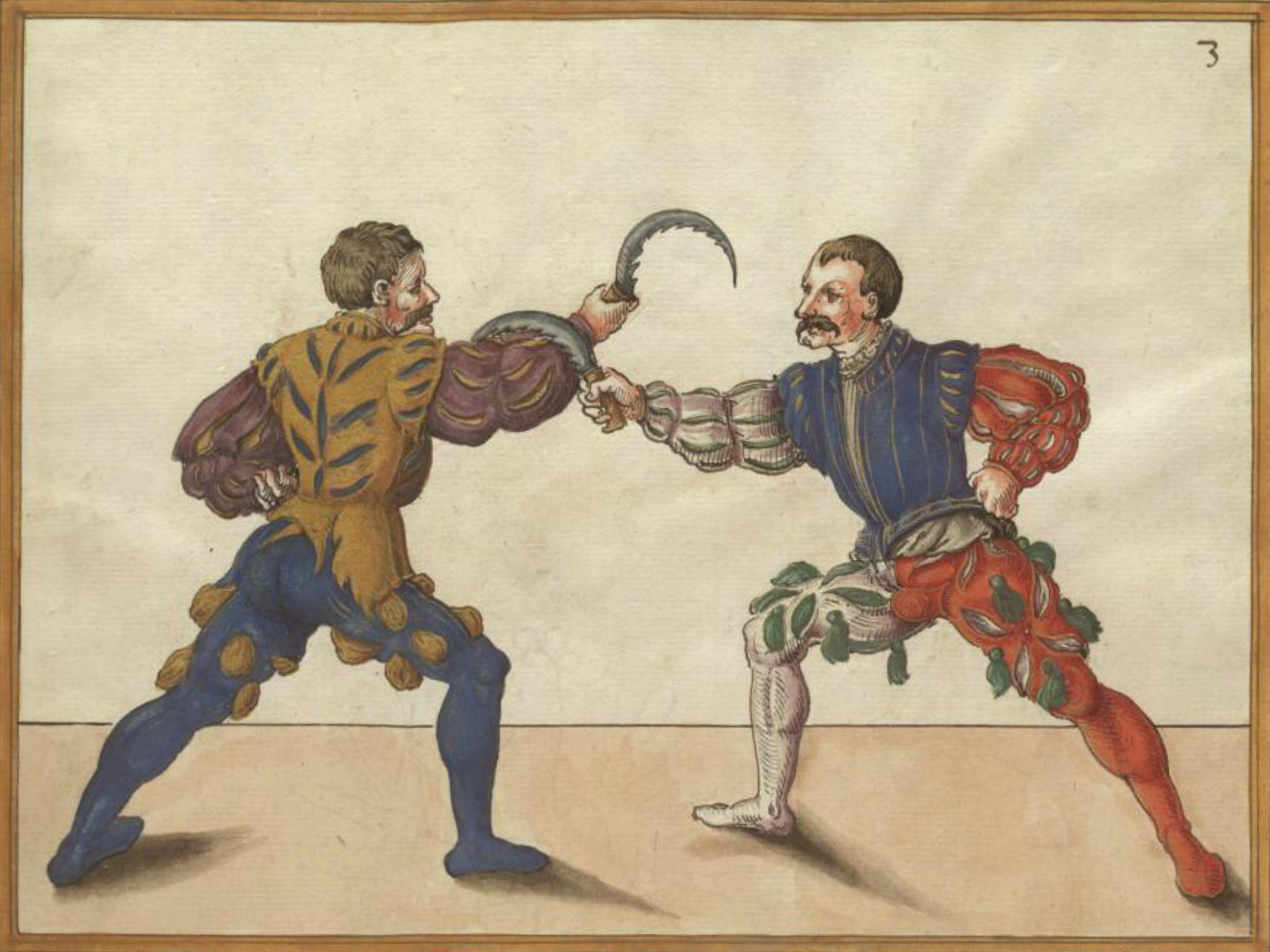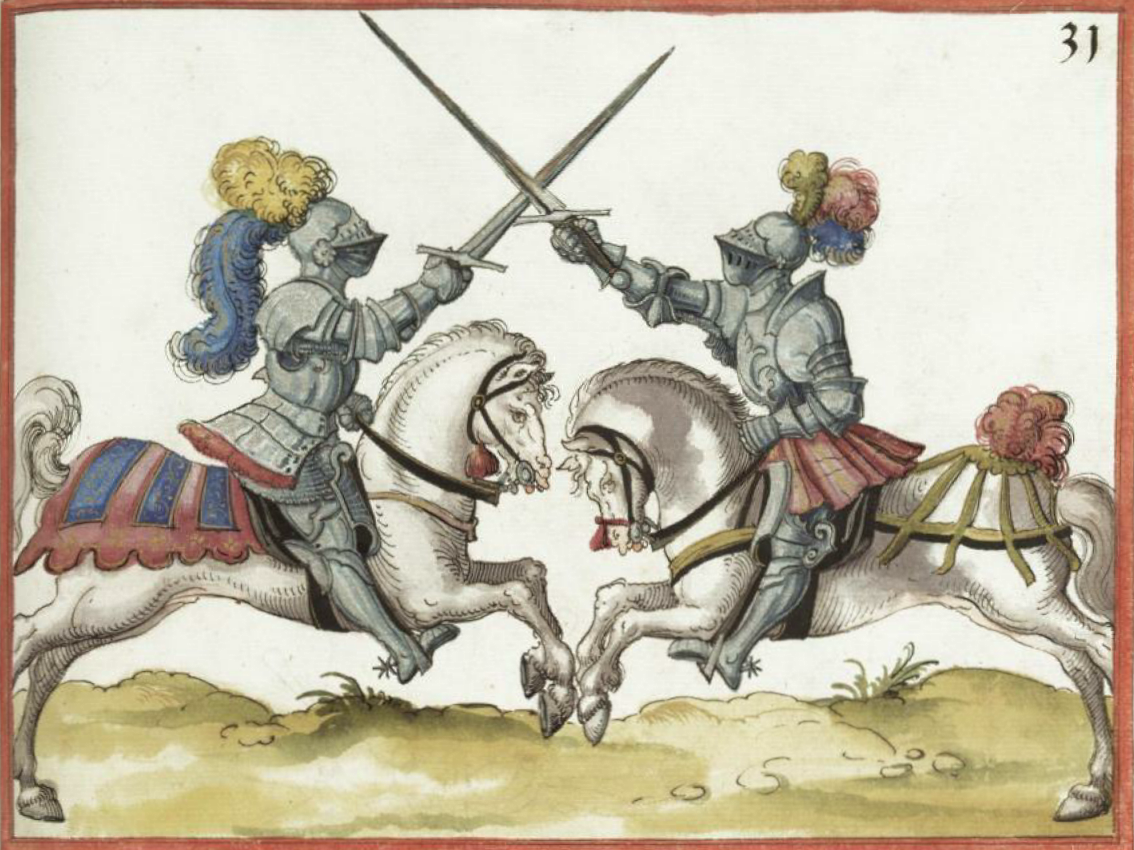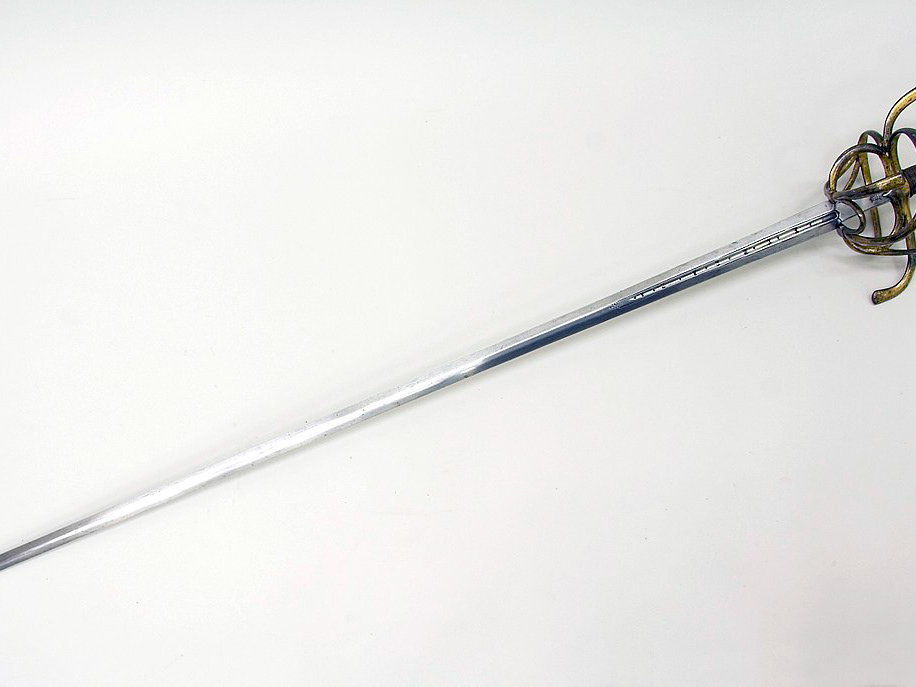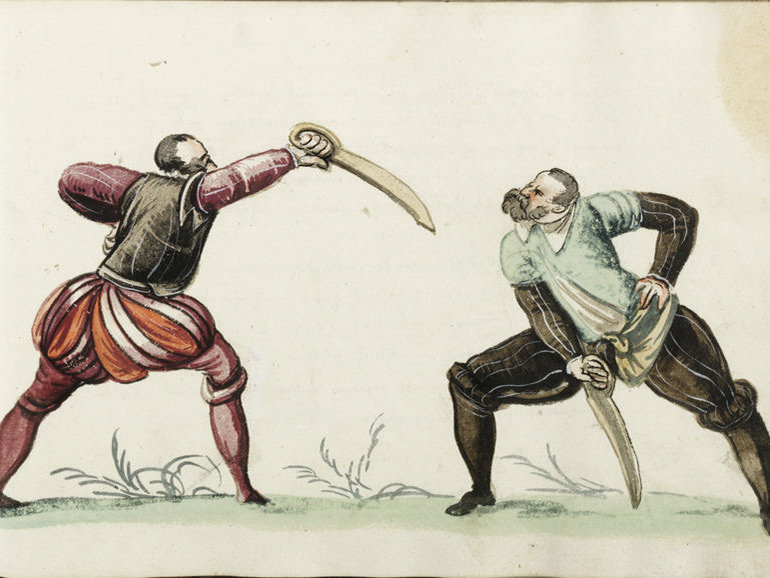Wrestling
Wrestling represents the biomechanical foundation of any weapon-based martial art. Details of its techniques or mentions of its importance are included in nearly every major manual studied by practitioners of HEMA. Historically wrestling was often done for sport or recreation as well as for self-defense. Ringen is the German art of wrestling which the masters argue precedes all other combative arts. It is a complete system and details how to grapple standing up, how to pin opponents on the ground, grapple with or without weapons, and in armor. [1]
Types of Wrestling
When wrestling unarmed, the goal is to pin the opponent or establish a position of dominance.
An example of a hip throw from Paulus Hector Mair's Dresden Manuscript.
Courtesy of Wiktenauer.
When fighting with daggers, the goal is to control the opponent’s dagger and either disarm or stab them.
An unarmed technique for controlling the opponent’s dagger. By Paulus Kal in his Fechtbuch (Cgm 1507), Folio 79V.
Courtesy of Wiktenauer.
When wrestling with the sword (the German term is ringen am schwert), the fighter attempts to either pommel the opponent in the face, throw them to the ground, or disarm them. Image 82 below shows the act of pommeling, which means to hit your opponent with the rounded end of a sword.
An example of pommeling an opponent in the face from Paulus Hector Mair’s MSS Dresd.C.93/C.94 plate 82.
Courtesy of Wiktenauer.
If wrestling in armor, then the objective is to wrestle the opponent the ground, then apply a joint lock or stab a dagger into their visor or other weak points.
How to finish an opponent in armor, depicted in Talhoffer’s MS Thott.290.2o Folio 137v.v.
Courtesy of Wiktenauer.
Sources
Italian
Fiore de'i Liberi (early 1400s): The foundation of the Italian fencing tradition is the Flower of Battle by Fiore de’i Liberi. The book describes Fiore’s life fighting and teaching and describes how to wrestle and fight with a dagger, sword, polearms, on a horse, and in armor. This is a complete martial system and is foundational to Italian martial arts. His grappling section is concise but effective, describing several throws, locks, and other techniques.
German
Die Blume des Kampfes (Flower of Battle) (1420, 1500, 1623): Die Blume des Kampfes (“The Flower of Battle”) is a nickname given to a group of three German manuscripts which share a common technical syllabus and set of illustrations. It might possibly be based on the tradition of 14th-century Italian master Fiore de'i Liberi, from whose treatise Fior di Battaglia derives its nickname, given that his works include considerable overlap in technique and artwork. It is equally possible, though, that they represent a separate transmission of an older tradition of which Fiore was himself an initiate. The German text dwarfs Fiore's own rather brief treatment of unarmored grappling and describes dozens of holds, throws, and submissions.
Ott Jud (1448-1460): Ott Jud was a 15th-century German wrestling master. His name signifies that he was a Jew, and several versions of his treatise (including the oldest one) state that he was baptized Christian. Ott's treatise on grappling is repeated throughout all of the early German treatise compilations and seems to have become the dominant work on the subject within the Liechtenauer tradition. His texts are some of the most important in the entire corpus of German wrestling treatises.
Hans Talhoffer Württemberg manuscript (1467): Talhoffer lived a long and interesting life, as evidenced by his manuscripts which cover both armored and unarmored combat with a wide assortment of weapons, including the buckler, crossbow, dagger, flail, Messer, longshield, mace, poleaxe, spear, and sword, as well as unarmed grappling. His work covers fighting on horse and on foot in scenarios including tournaments, formal duels, and unequal encounters implying urban self-defense. While his captions are sparse, a rich variety of grappling techniques are present in all of his manuscripts.
The Nuremberg Group (1470-1510): The Nuremberg Group is a series of 15th and 16th-century German manuscripts that describe a common set of techniques and seem to have originated in the area of Nuremberg, Germany. It has been suggested that these treatises define a local martial arts tradition native to that city, which would be a subset of the mainstream German style. While the translation of the grappling section is incomplete, the text has nearly 100 images of different plays, making it a visually rich source.
Fabian von Auerswald (1539): Auerswald was a German wrestling master who wrote an extensive treatise detailing 85 different grappling devices in great detail. His source is also one of only two known descriptions of the game called "wrestling in the pit".
Paulus Hector Mair (1540): Mair was a collector of fencing manuscripts and owned over a dozen fencing manuals over the course of his life. Most of the treatises Mair published were revisions or expansions upon the works in his collection. His grappling section is based upon the teaching of Fabian von Auerswald among others and is extensively detailed, beautifully illustrated, and exactingly descriptive.
Johann Georg Pascha (1663): Pascha was a 17th-century German fencing master and one of the most prolific authors on fencing of his time. He wrote at least fourteen books on military subjects including grappling; fencing with the pike, rapier, staff, and spear; musketry; cutting; and various gymnastic exercises. His grappling section is extraordinarily extensive and covers dozens of techniques and applications.
Nicolaes Petter (1674): Petter was a 17th-century German wine merchant and wrestling master who practiced a style of grappling known as luctorius, and was known in his time as an unbeatable wrestler. Petter wrote an extensive treatise on grappling as a means of urban self-defense that was subsequently reprinted and translated many times in the following centuries. Sydney Anglo, a research professor of history at the University of Wales, describes this text as "historically speaking, [one of] the [two] most important treatises on unarmed combat ever printed".
Demonstration
This is an example of HEMA Ringen.
A demonstration of how wrestling is incorporated into dagger combat.
A demonstration of wrestling with the sword.
Jessica Finley demonstrates the technicality of wrestling in armor.
Equipment
I have created an extensive list of recommended grappling equipment for beginners in HEMA.
Citations
Footnotes
[1] Fiore Friulano de’i Liberi, The Flower Of Battle, pdf, 3rd ed. (repr., HROARR, 2016), https://hroarr.com/wp-content/uploads/downloads/2016/08/wiktenauer-Fiore-de-i-Liberi-compilation-2016.pdf.
Citations
de’i Liberi, Fiore Friulano. The Flower Of Battle. Pdf. 3rd ed. Reprint, HROARR, 2016. https://hroarr.com/wp-content/uploads/downloads/2016/08/wiktenauer-Fiore-de-i-Liberi-compilation-2016.pdf.
Written by Nicholas Allen, founder and former head instructor of the VCU HEMA club.
Edited by Kiana Shurkin, xKdF
Historical sources fact-checked by Michael Chidester, Editor-in-Chief of Wiktenauer
